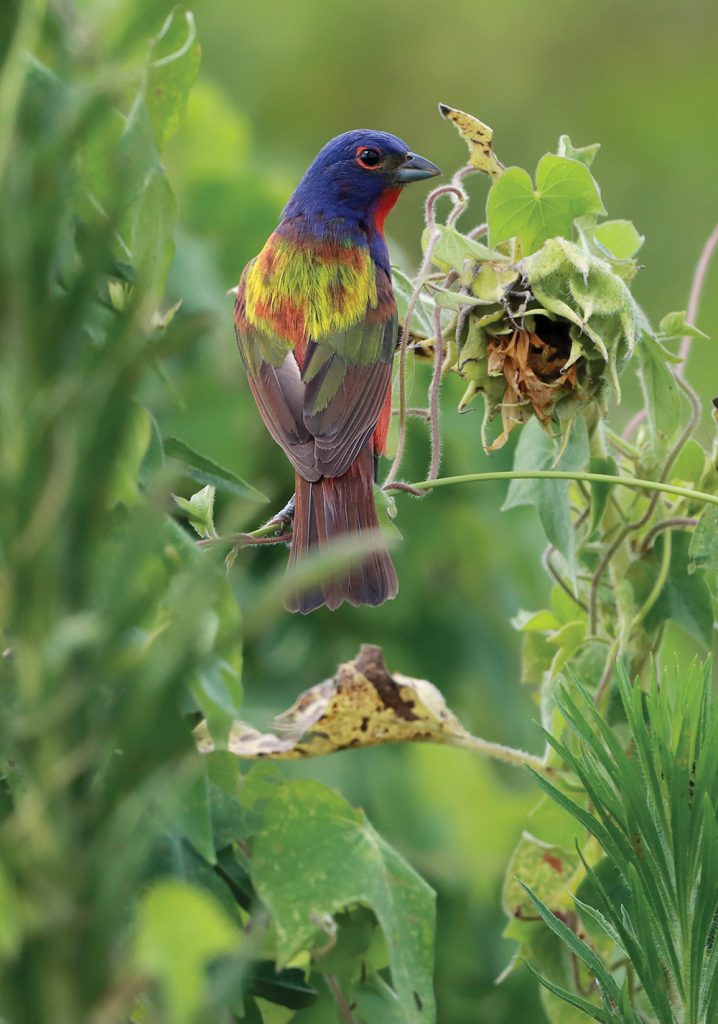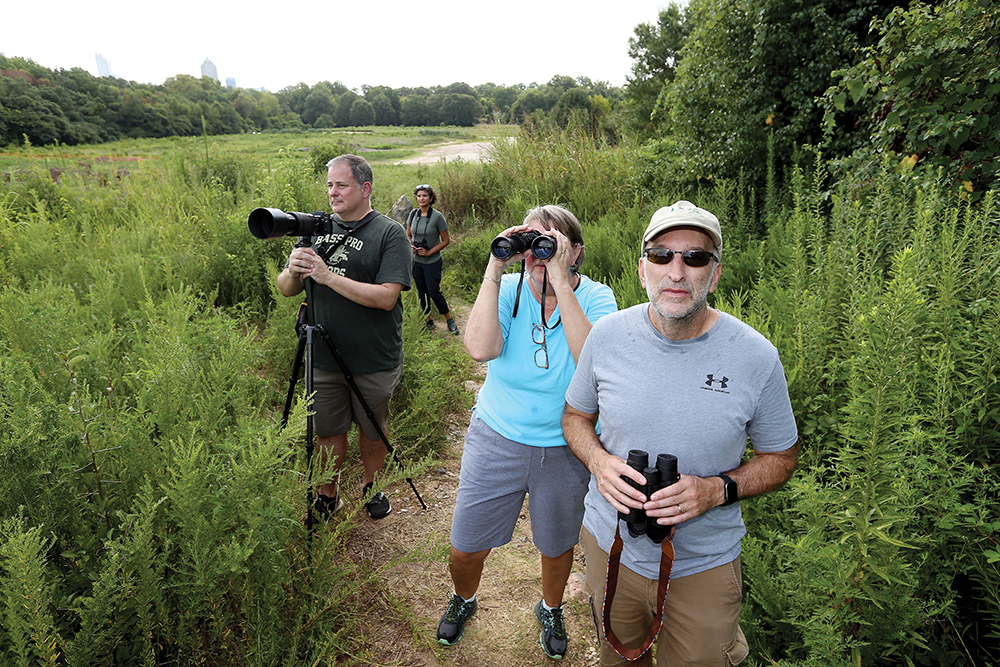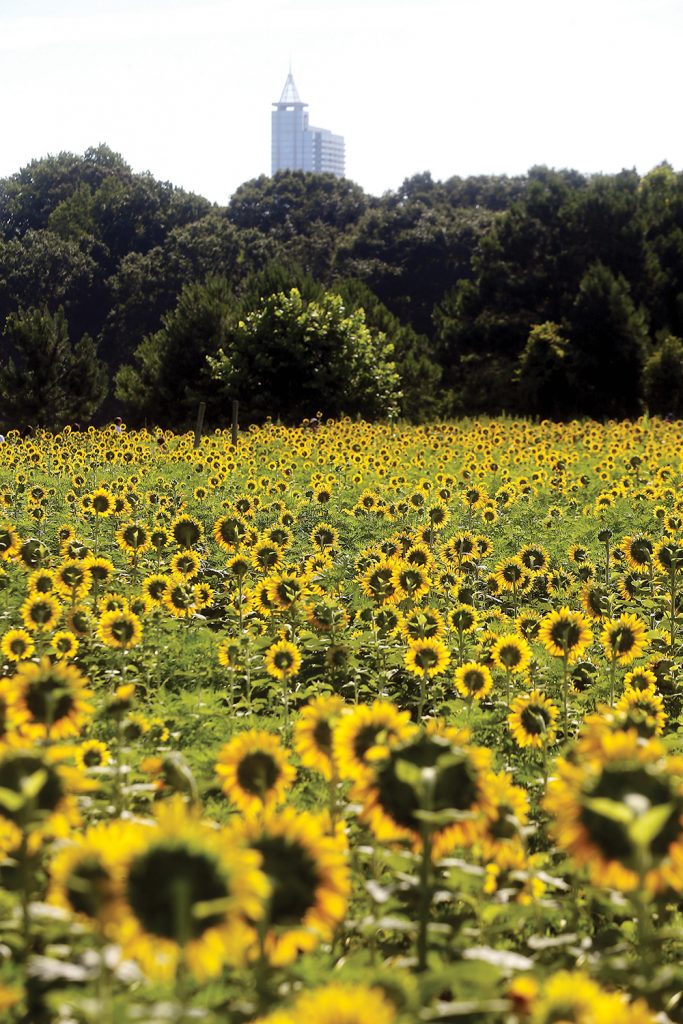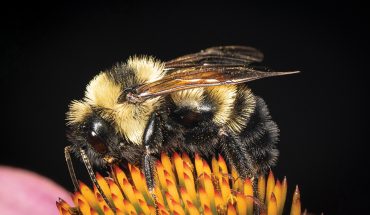Each July, a 5-acre field of brilliant yellow sunflowers attracts thousands of people — plus rare birds and other wildlife — to our city.
by Ayn-Monique Klahre | photography by Bob Karp
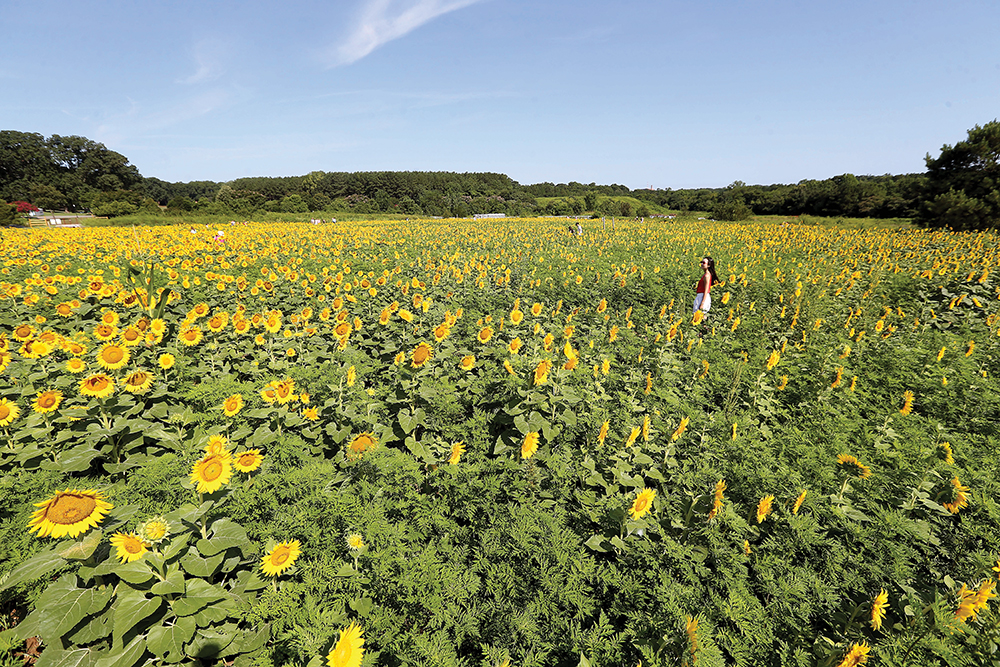
It started as more of an environmental experiment: In 2018, the Raleigh water department planted a plot of sunflowers, tucked away in Dorothea Dix Park, to harvest the seeds for reuse as biofuel. But folks got a glimpse from the greenway and wanted to get closer. “We had just planted the sunflowers in this unused nook of space, but quickly realized we should put them someplace where people could actually enjoy them,” says Lauren Danforth, who does marketing and communications for Dix Park for the City of Raleigh.
So the next year, Dix Park planted over 5 acres of sunflowers in the middle of the park — and people showed up in droves. “It was more than anything we could have imagined in scope, just this outpouring of people,” says Danforth. Now, four years later, visiting the blooming sunflower field has become a tradition for many in Raleigh and even out of state, an opportunity to enjoy a natural spectacle with the downtown skyline as a backdrop.
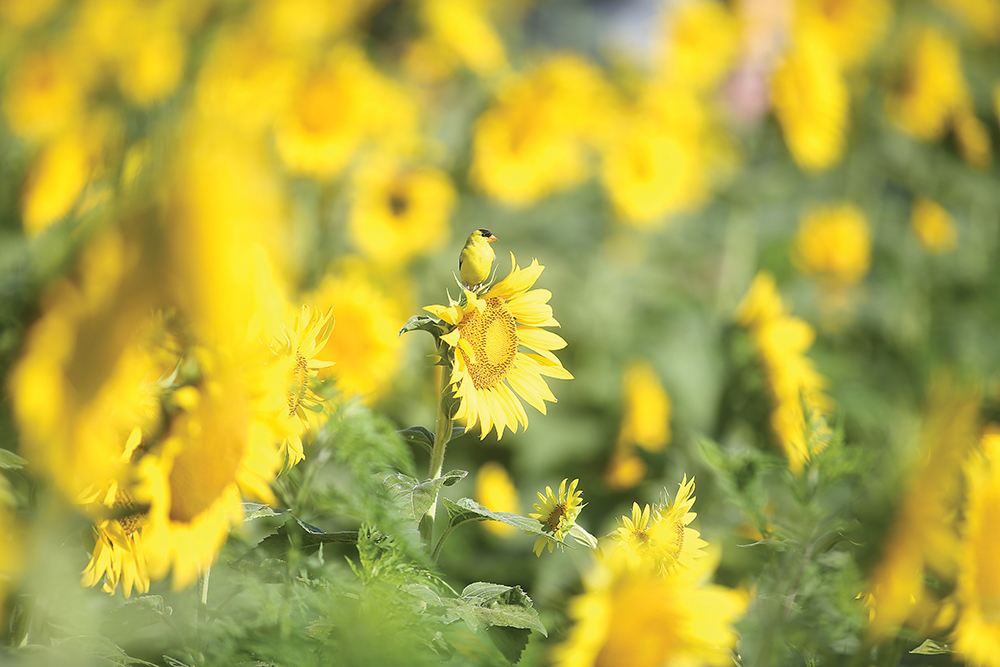
It’s also popular with natural visitors. “The sunflowers are a big welcome mat for all sorts of wildlife to come and enjoy this field that’s smack-dab in the middle of Raleigh,” says Raleigh city horticulturist Neal Wisenbaker. As the flowers bloom, pollinators descend, primarily bees and butterflies.
And as the flowers die, their rich seed heads attract all kinds of birds, including goldfinches, nuthatches, titmice, grosbeaks, and, for the first time last year, a male painted bunting, a very colorful bird in the cardinal family not often seen in these parts.
“People were thrilled. It’s not that the painted bunting is so rare but it was making such a show in the middle of our city,” says Wisenbaker.
One of the bunting’s fans is Dr. W. Jason Miller, a professor at NC State University and avid birder. “The sunflowers attract an unbelievable amount of finches,” says Miller, who notes that other notable bird visitors include the chestnut warbler, Mississippi Kites, cedar waxwings and the scarlet tanager.
But for him, sighting the painted bunting last year and this summer has been especially memorable. “When you hear there’s an extraordinary bird in the field, you head there with binoculars. The first time I turned the focus on the lens and saw that kaleidoscope of feathers, I spent 39 straight minutes looking at him,” says Miller. “My left arm got sore, my right arm got sore, and finally I just sat down and listened. When you encounter a painted bunting, it’s sublime.”
Miller’s one of many birders who visit the park daily this time of year, sometimes more than once a day. The birders tend to arrive first thing in the morning, before the crowds. “The peak visitors are in the evenings after work or on the weekends, because midday can be sweltering hot,” says Danforth.
Over the years, the infrastructure around the sunflower field has grown. There are picnic areas and swings nearby and public-initiated art projects that serve as bee hotels. This year, there will be food trucks and refreshments on site during peak visiting times.
The same amount of seeds have been planted as in previous years — about 200,000 — and if all goes as planned, the sunflowers will bloom in mid-July for about two weeks (rain, air temperatures and other factors make the timeline hard to predict). “It’s amazing to see how the sunflowers have been so embraced by the Raleigh community,” says Danforth. “It appeals to anyone and everyone, from a bike club to families to folks living in retirement homes.”
“The sunflowers offer such a beautiful intersection of nature and the urban environment,” says Wisenbaker.
“It’s so special for people to experience wildlife, and for wildlife to experience our city.”
This article originally appeared in the July 2023 issue of WALTER magazine.

